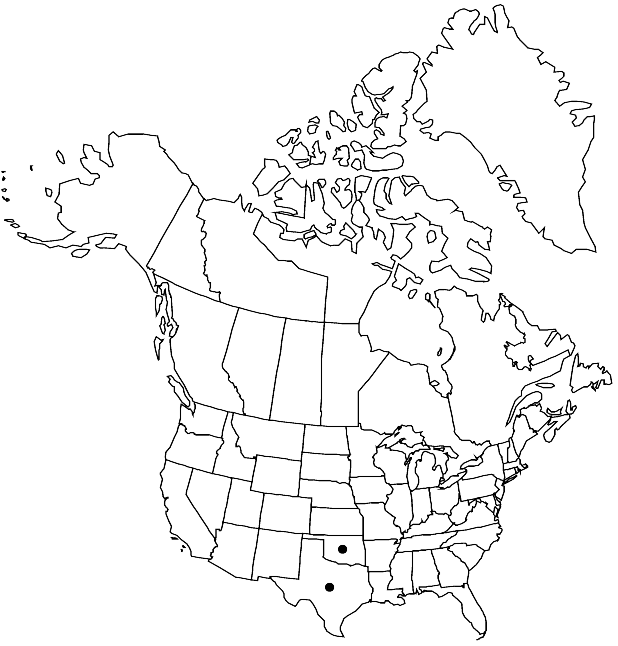Physaria engelmannii
Novon 12: 322. 2002.
Perennials; caudex simple or branched, (woody, aerial); densely pubescent, trichomes (sessile or short-stalked), several-rayed, rays simple or furcate, distinct or fused at base, (asymmetrical with deep notch on one side, often with a U-shaped gap between 2 of the rays, umbonate, strongly tuberculate). Stems few to several from base, erect, (usually unbranched), (1.5–)2.5–4(–6) dm. Basal leaves: blade elliptic to obovate, 2–6.5 cm, margins entire, sinuate, or remotely toothed, (surfaces occasionally sparsely pubescent). Cauline leaves: (proximal often petiolate, distal sessile or subsessile); blade oblanceolate to linear, 1–4 cm, margins entire. Racemes dense, (subumbellate). Fruiting pedicels (ascending), relatively short. Flowers: sepals ovate or elliptic, 5.5–10 mm, (median pair thickened apically, cucullate); petals (bright yellow), obovate to elliptic, 8–14 mm, (sometimes with distinct claw, often retuse). Fruits (shortly stipitate), ± globose or ellipsoid, not or slightly inflated, 5–8 mm; valves (not retaining seeds after dehiscence), glabrous throughout; replum as wide as or wider than fruit; ovules (8–)12–20 per ovary; style 3.5–5 mm. Seeds flattened. 2n = 12, 24, 36.
Phenology: Flowering Apr–May.
Habitat: Limestone prairies, rocky ridges, pebbly shores, thin caliche soils, limestone outcrops
Elevation: 150-400 m
Discussion
Selected References
None.
